When Lahti’s Sibelius Hall finally shone and coruscated into life in 2000, the 100,000 citizens of this modest Finnish town, not to mention acousticians from all over the world, could hardly believe their eyes and ears. Here, at last, was not only a top concert hall fit for what had already become a world-class orchestra under notable Sibelian Osmo Vänskä, but also a twofold architectural wonder. The auditorium has been pithily described as “a Stradivarius in a glass box”; the foyer known as the Forest Hall reflects its surroundings, both the water beyond and also the wood which has been the making of this “city of carpenters”, shipped down the inland constellation of lakes before being moved by rail to St Petersburg.
My first encounter with this marvel in its crowning glory so far, a week-long celebration of Finland’s greatest composer in his 150th birthday year, filled me with some of the wonder that must have been felt at that opening. As the Sibelius Hall is some distance from the centre of town, though, acquaintance must usually be postponed. Unless they're coming to ski in the winter, most visitors will probably not be too impressed when they pitch up at one of the central hotels: the centre of Lahti is all too typical of those Finnish cities which were monumentally revamped in the 1960s and 1970s, with little of the wooden architecture left which must once have made it so attractive.
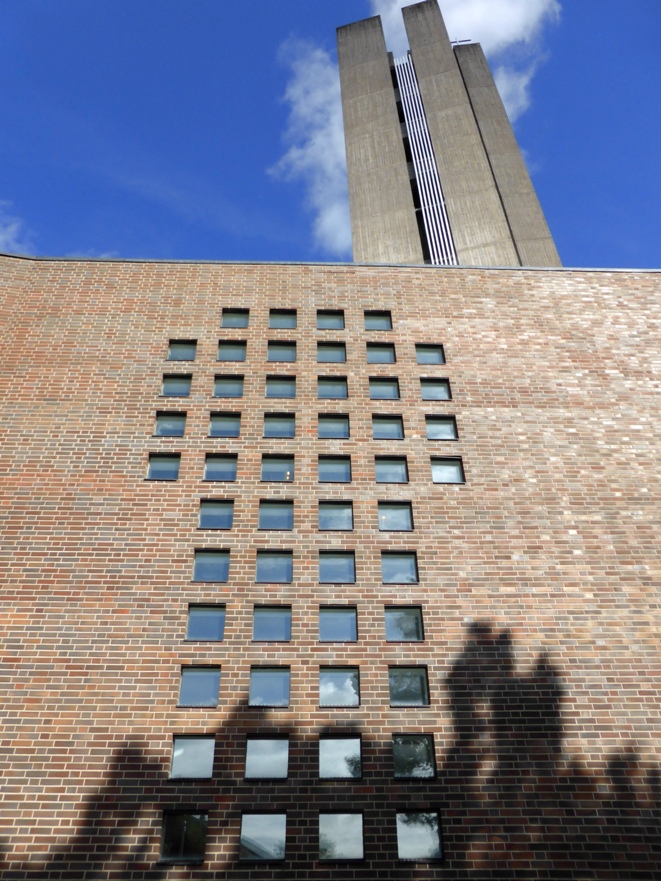 “A summer day in Lahti”, printed on a piece of bark, asks you to “admire the renovated market square and try to guess how many cars can be parked underneath it, on two levels”. Though I was pleased to see and buy cloudberries in the rather few market stalls, such guessing wasn't exactly on my mind. But up the hills either side of the main drag are two fine specimens of 20th century Finnish architecture – the Town Hall designed by the architect of Helsinki’s very grand Central Station, Eliel Saarinen, and the Church of the Cross (pictured right), begun by Alvar Aalto and completed by his widow after his death in 1976. Most striking are its 52 windows, one for each week of the year, making up the sign of the cross.
“A summer day in Lahti”, printed on a piece of bark, asks you to “admire the renovated market square and try to guess how many cars can be parked underneath it, on two levels”. Though I was pleased to see and buy cloudberries in the rather few market stalls, such guessing wasn't exactly on my mind. But up the hills either side of the main drag are two fine specimens of 20th century Finnish architecture – the Town Hall designed by the architect of Helsinki’s very grand Central Station, Eliel Saarinen, and the Church of the Cross (pictured right), begun by Alvar Aalto and completed by his widow after his death in 1976. Most striking are its 52 windows, one for each week of the year, making up the sign of the cross.
If you walk up to the church and head over the hill roughly in the direction of the Sibelius Hall past the sports grounds – something I didn’t do until my last post-concert day in town – Lahti’s attractive location becomes more obvious. What they call an arboretum in the Kariniemi Park feels like a wild Finnish wood, planted with an impressive variety of spruces and larches and dotted about with sculptures by local artist Olavi Lanu.
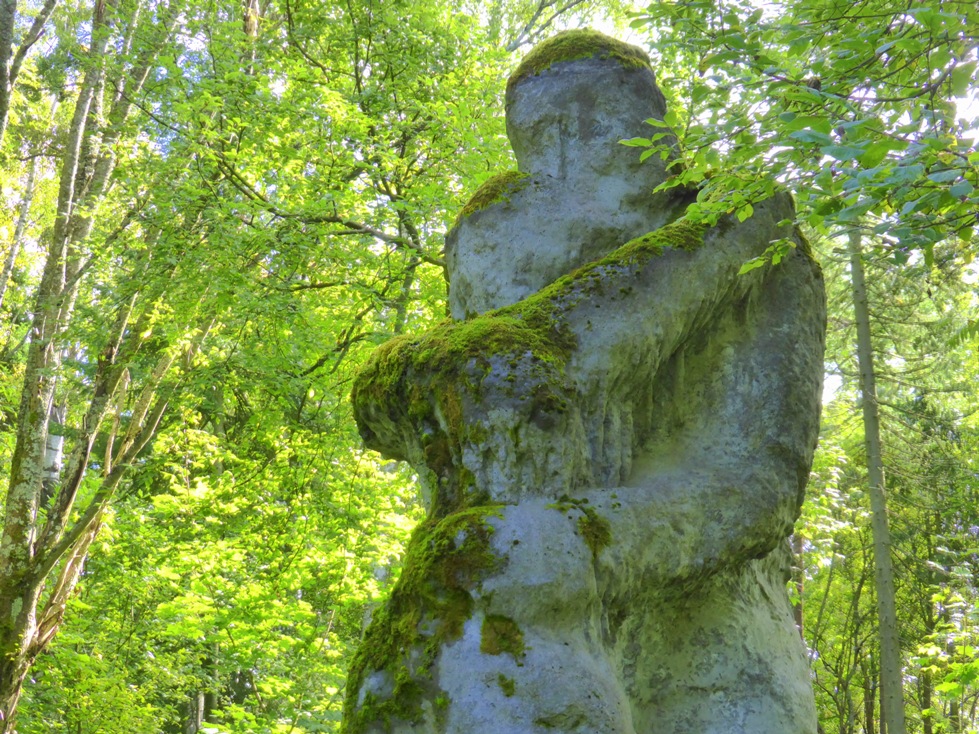 Moss and dappled sunlight have softened their reinforced concrete to make them part of the landscape (pictured left, one of the 11 sculptures). They stand high on the hill amid dense Siberian pines, silver birches, spruces. Several narrower paths then wind down; the one I took on Sunday lunchtime was to the accompaniment of Grieg's "Morning" from Peer Gynt wafting over the loudspeakers from the musical fountain on the pond below. The lakeside promenade is what Lahti’s citizens call their summer olohuone or living room, with cyclists, joggers – running a special local marathon that morning – and folk with dogs thronging to enjoy the Finnish nature which is never far away.
Moss and dappled sunlight have softened their reinforced concrete to make them part of the landscape (pictured left, one of the 11 sculptures). They stand high on the hill amid dense Siberian pines, silver birches, spruces. Several narrower paths then wind down; the one I took on Sunday lunchtime was to the accompaniment of Grieg's "Morning" from Peer Gynt wafting over the loudspeakers from the musical fountain on the pond below. The lakeside promenade is what Lahti’s citizens call their summer olohuone or living room, with cyclists, joggers – running a special local marathon that morning – and folk with dogs thronging to enjoy the Finnish nature which is never far away.
Walk towards the harbour (pictured below) and once you reach a number of pleasant boat-cafes, the Sibelius Hall’s complex swings into sight. The glass beauties have been effectively welded on to the remains of an 1890s furniture factory, through one red-brick wing of which you enter to find yourself in the Forest Hall. Here the most imaginative contribution of the architects who won the competition in 1998, Kimmo Lintula and Hannu Tikka, finds art mirroring nature. The glass “skin” looks through to the sunsets on the lake and floods the hall with light on sunny afternoons.
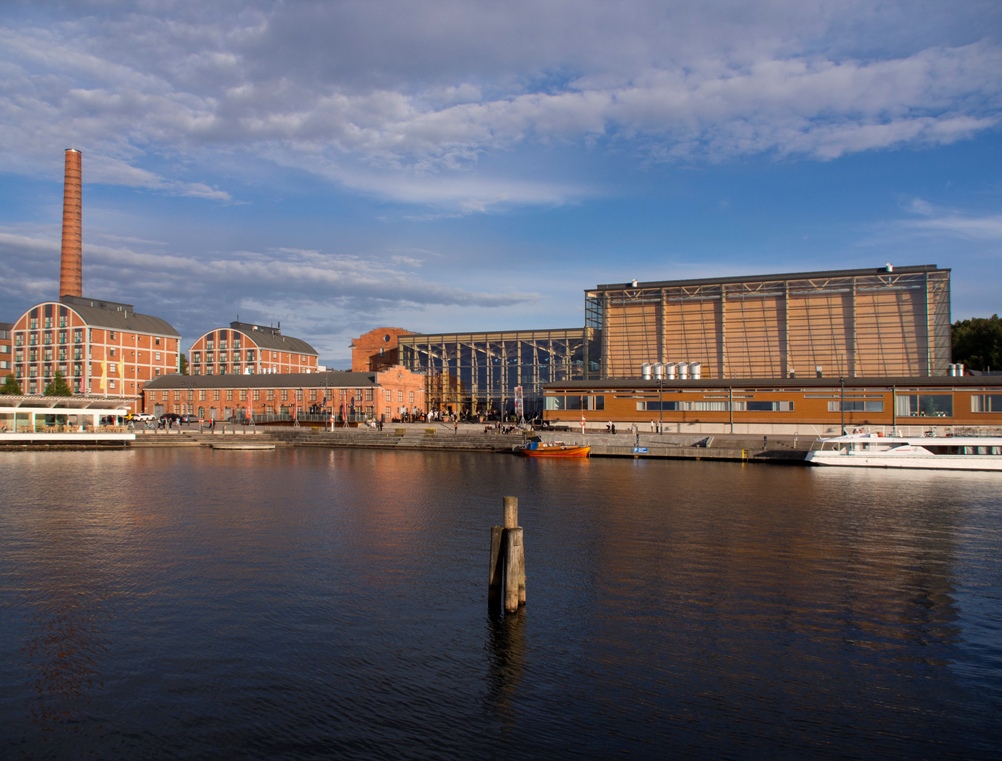
The pillars and roof inside emulate a pine forest. Nine tapered spruce “trunks” support geometrically arranged “branches” which in turn support the roof, the spaces in between a “night sky” with fibre optic cables representing the alignment of the night sky on the day of Sibelius’s birth (pictured below).
Birch staircases ascend to the concert balconies, and once inside the 1,250-seater auditorium, the five wood species reflect fancifully the names of a great piano opus by Sibelius, among his most haunting and free-form miniatures: “When the Mountain Ash is in Flower”, “The Lonely Pine”, “The Aspen”, “The Birch” and “The Spruce” (let no one tell you Sibelius’s prolific output for solo piano is trivial; it just needs careful sifting). American acoustician Russell Johnson’s Artec Consultants, responsible for other concert-hall masterpieces in Lucerne, Birmingham and Reykjavik, based the design on the trusty shoebox model of Vienna’s Musikvereinsaal and Amsterdam’s Concertgebouw, with curved balconies softening any angularity. Reverberation is adjustable via a three-part canopy and 188 doors between auditorium and reverberation chamber.
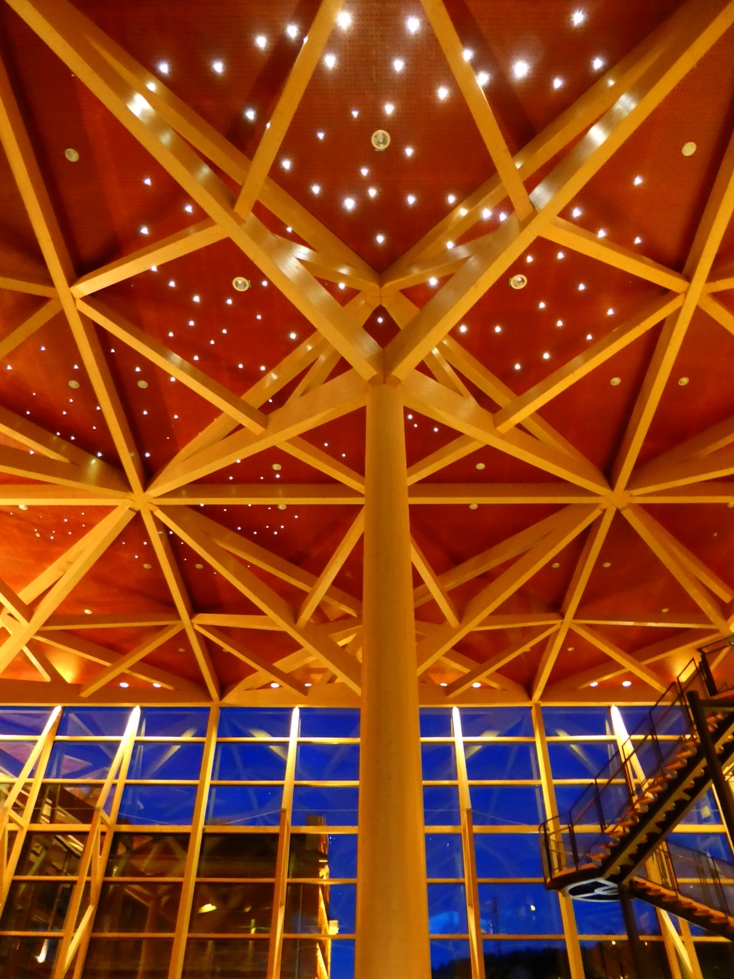 How did this work in practice? I heard the last two concerts in the week’s Sibelius cycle. There had been visits from the Helsinki Philharmonic and the inimitable Leif Segerstam and the BBC Symphony Orchestra, with Sakari Oramo reprising with a smaller male voice choir what for me was the most transformative Prom programme this season of En Saga and Kullervo one night and a concert the following night with the Lahti Symphony Orchestra’s current principal conductor, the great Okko Kamu. Vänskä, Kamu's predecessor in Lahti with whom the orchestra’s international profile can said to have begun, conducted his now-successful “project” on the second night (nobody really talks or writes about the Lahti years BV, “before Vänskä”).
How did this work in practice? I heard the last two concerts in the week’s Sibelius cycle. There had been visits from the Helsinki Philharmonic and the inimitable Leif Segerstam and the BBC Symphony Orchestra, with Sakari Oramo reprising with a smaller male voice choir what for me was the most transformative Prom programme this season of En Saga and Kullervo one night and a concert the following night with the Lahti Symphony Orchestra’s current principal conductor, the great Okko Kamu. Vänskä, Kamu's predecessor in Lahti with whom the orchestra’s international profile can said to have begun, conducted his now-successful “project” on the second night (nobody really talks or writes about the Lahti years BV, “before Vänskä”).
My first impressions came from the cue of Jukka-Pekka Saraste, Lahti chief between Vänskä and Kamu, in the First and Fifth Symphonies. Impressions were of incredible sound definition, especially from the woodwind, and a spring back from loud chords followed by silences, but a certain over-brightness and blatancy of brass, particularly trumpet-playing; this, I’m told, was partly the roughness Vänskä wanted during his time here. Saraste wanted the acoustic doors open; when Kamu took over for a final main concert, including the Sixth and Seventh Symphonies, he did not and maybe partly for that reason everything made sense. The blend was more subtle, the conducting style no less masterly and economical, but the strings tended to burn more for Kamu; the brass sounded more integrated and layered, the interpretations that bit more giving. And the hall’s famous requirement of “hearing the silence”, the absoluteness of which had been an acoustic objective, worked hand in glove with an always sensitive audience to create the necessary frisson with the fade into infinity at the end of Pohjola’s Daughter.
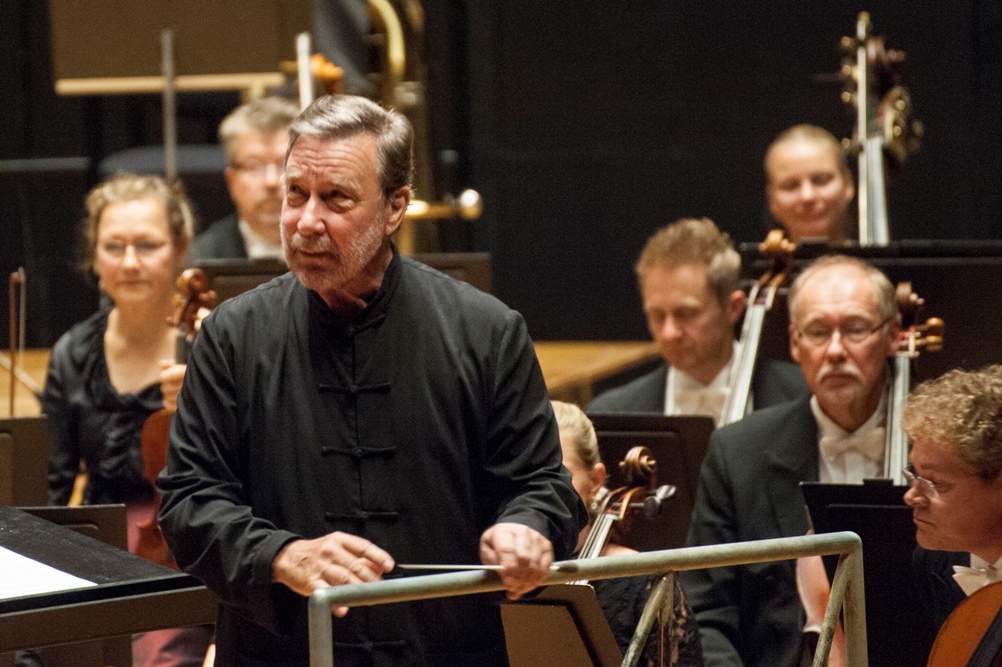 If I had to choose a highlight from the seven orchestral works I heard – eight including the ubiquitous Finlandia encore at the end – it would be Kamu’s interpretation of the gleaming, unassuming Sixth, absolutely the best I’ve heard in a concert hall, full of mysterious banked powers – let no one call this a light work, except in the sense of its peculiar radiance – with no false gear changes and no over-interpretation (Kamu and strings of the Lahti Symphony Orchestra pictured above). The Seventh was equally, vitally fluid, full of health and joy; The Oceanides rose to the peak of its highest wave effortlessly and fell back just as naturally. I have to agree with American critic Olin Downes that this is the most evocative piece of sea music ever written, Debussy's La Mer included.
If I had to choose a highlight from the seven orchestral works I heard – eight including the ubiquitous Finlandia encore at the end – it would be Kamu’s interpretation of the gleaming, unassuming Sixth, absolutely the best I’ve heard in a concert hall, full of mysterious banked powers – let no one call this a light work, except in the sense of its peculiar radiance – with no false gear changes and no over-interpretation (Kamu and strings of the Lahti Symphony Orchestra pictured above). The Seventh was equally, vitally fluid, full of health and joy; The Oceanides rose to the peak of its highest wave effortlessly and fell back just as naturally. I have to agree with American critic Olin Downes that this is the most evocative piece of sea music ever written, Debussy's La Mer included.
Revelation of the week came in my first concert, an afternoon recital from the Sibelius Piano Trio (pictured below) in the functional Kalevi Aho Hall, a 225-seater in the central Lahti Music Institute. I knew the earlier string quartets, but I blush to say I’d never listened properly to the concise and sparkling “Loviisa” C major Trio of 1888 and its bigger-boned predecessor, the “Korpo” Trio in D major. Sibelius had written no major orchestral music at this time, but the style, utterly individual even with shades of Tchaikovsky in the piano’s occasional Liberace-lacy flourishes, is surprisingly vivacious.
 Even in his early twenties Sibelius was looking for unpredictable ways of rounding off movements, of connecting, of giving his violin an especially scintillating role in the “Korpo” finale, dispatched in true virtuoso style by Petteri Iivonen. Perhaps neither of these works is as complex or elusive as the “Voces Intimae” Quartet which I was glad to hear again for the first time this year in a performance from the Tempera Quartet the following lunchtime which steadily gained in confidence and nuance; but the Trios were the true surprises of the week.
Even in his early twenties Sibelius was looking for unpredictable ways of rounding off movements, of connecting, of giving his violin an especially scintillating role in the “Korpo” finale, dispatched in true virtuoso style by Petteri Iivonen. Perhaps neither of these works is as complex or elusive as the “Voces Intimae” Quartet which I was glad to hear again for the first time this year in a performance from the Tempera Quartet the following lunchtime which steadily gained in confidence and nuance; but the Trios were the true surprises of the week.
Though I wished I’d been able to share the enthusiasm of colleagues who’d been in Lahti the whole week for such gems as Segerstam’s avowedly magical interpretation of Luonnotar with the peerless Mrs Oramo, Anu Komsi, and heard how Kamu conducted a by all accounts lucid Second Symphony with the BBCSO, I felt happy that I’d completed my own pick-and-mix cycle of sorts – first four symphonies and Kullervo at the Proms, though only the earlier two were wholly successful, the rest in Lahti.
Perhaps the true test is yet to come when the Lahti Symphony Orchestra’s Sibelius symphonies just released on BIS, its second and the first to be recorded in the hall, need to be compared in review with Rattle’s imminent Berlin Philharmonic cycle. In a sense, the outcome has already been foreshadowed: I know from concert performances that the Berliners with the Brit don’t come anywhere near in deeper, seemingly effortless understanding to Kamu and his fellow Finns. I’ve had my vision; maybe the CDs will tell a different story, but I doubt it.
- David Nice's blog on Oramo's Kullervo experience at the Proms and the first of four entries on an unforgettable winter visit to Sibelius's home, Ainola
- Listen to most of the concerts on the Finnish Broadcasting Company's website

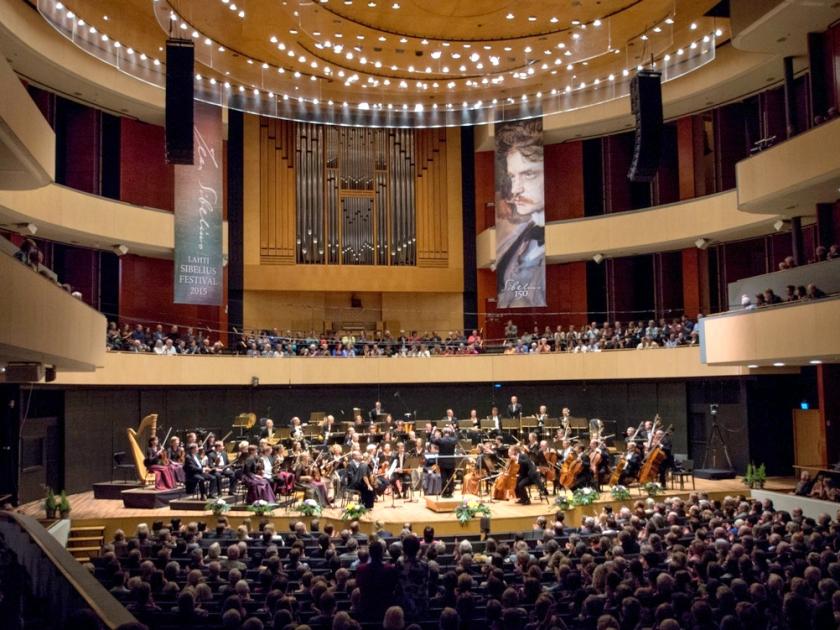












Add comment